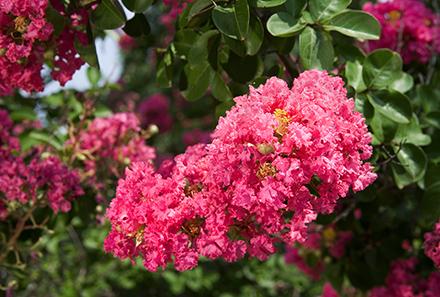ARS Research in Your Garden
From Our Gardens to Yours
It’s that time of year when many people turn their attention to landscaping. You may not realize it, but many of the ornamental trees and shrubs found throughout the United States were developed by the ARS's U.S. National Arboretum (USNA).
Located in the Nation’s capital, USNA offers over 400 acres of beautiful trees, shrubs and gardens. Researchers here develop, evaluate, and release improved ornamental and landscape plants through their work with plant genetic resources, or germplasm.
Three examples of this germplasm research, on display at USNA and perhaps even in your backyard, are crapemyrtles, ornamental cherry trees, and azaleas.
Crapemyrtles are an excellent example of the importance of germplasm collection. These highly popular trees are susceptible to pests and diseases, including powdery mildew and crapemyrtle aphids. Over 50 years ago, USNA began a breeding program to create disease-resistant crapemyrtles through the use of novel germplasm and since that time has released 31 improved varieties.
Cherry trees are an immensely popular symbol of the beginning of spring. In 1912, Japan gifted the United States with Yoshino cherry trees, which were planted around the Tidal Basin in Washington, D.C. Many years later, ARS research played a role in helping to preserve the genetic lineage of these trees by using DNA fingerprinting to determine the genetic diversity of cherry trees growing around the Tidal Basin. Each genetically distinct cherry type was propagated to ensure that the genetic diversity in the planting could be preserved for the future. This effort will help revitalize this national treasure by preserving the genetic resources represented in the planting. In addition, ongoing breeding efforts at USNA will broaden the genetic base of ornamental cherry trees planted in landscapes throughout the nation.
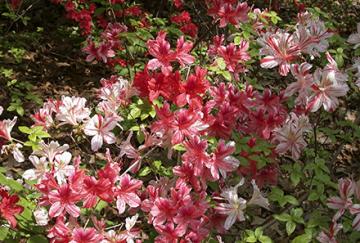
A hybrid Glenn Dale azalea from the U.S. National Arboretum’s Azalea Collections. Benjamin Morrison bred azaleas for cold-hardiness, floriferousness, and flower color variation. (Barbara Bullock, D4403-1)
Azaleas are one of the most popular flowering shrubs in the United States. Many states feature azalea festivals in the spring, and visitors flock to see the thousands of azaleas in USNA's Azalea Collection. Former Arboretum Director and horticulturist Benjamin Morrison introduced Glenn Dale azaleas—winter-hardy azaleas that bloom April through June—as the result of his 25-year breeding program that started in the 1920s.
Morrison's azalea breeding program incorporated a wide range of germplasm using not only azaleas from important U.S. sources but also plants and seeds collected in Asia. This program resulted in 454 new azalea cultivars. Almost all of the Glenn Dale cultivars and many of the parents still exist in the collection today.
While USNA ongoing breeding program supports horticultural industries by developing plants with improved ornamental attributes or tolerance to tough growing conditions, pests, or diseases, the arboretum's research goes far beyond that. Important research at the arboretum also benefits the public by creating trees, shrubs, and other ornamental plants that can grow in diverse landscapes to enhance public, residential, and commercial spaces with less than ideal growing conditions.
USNA provides educational programs and exhibits for the public, and each year almost half a million visitors enjoy unique collections, gardens, and natural settings in this serene urban oasis.
By Nancy Vanatta, ARS Office of Communications.
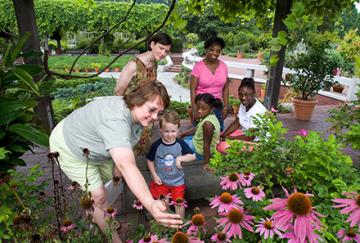
Members of the public learn about purple cone flower plants (Echinacea) during one of the many events at the U.S. National Arboretum. (Stephen Ausmus, D598-2)
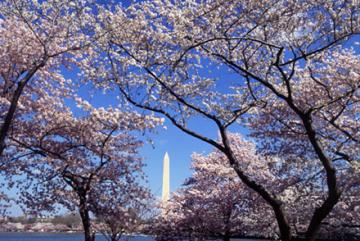
The Washington Monument framed by resplendent ‘Yoshino’ cherry trees. (Scott Bauer, K5878-9)
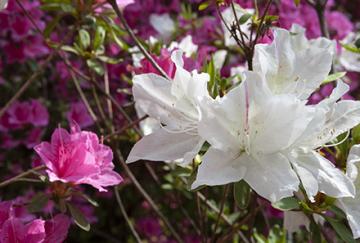
Purple and white azalea flowers from the U.S. National Arboretum’s Azalea Collections. (Stephen Ausmus, D916-9)
You May Also Like


